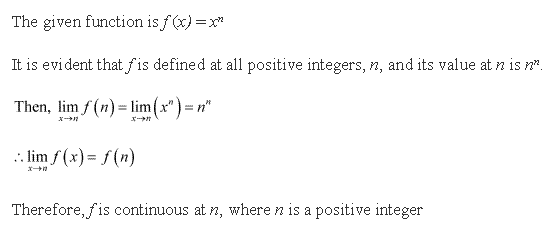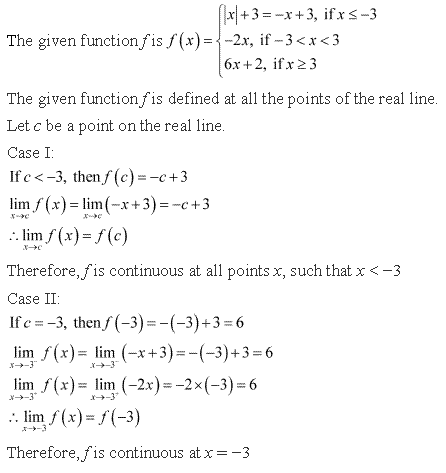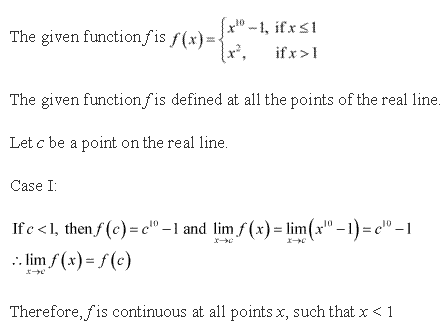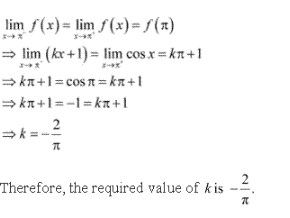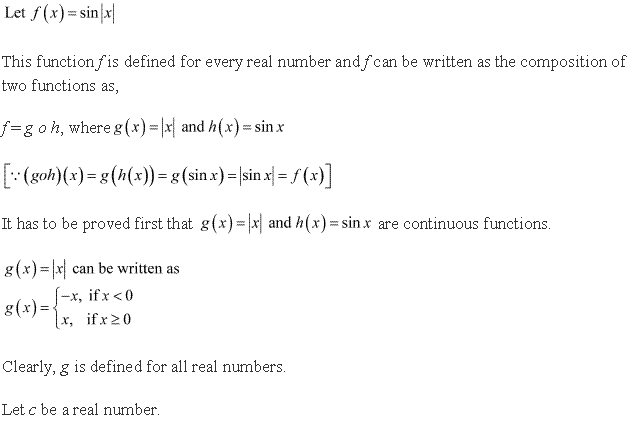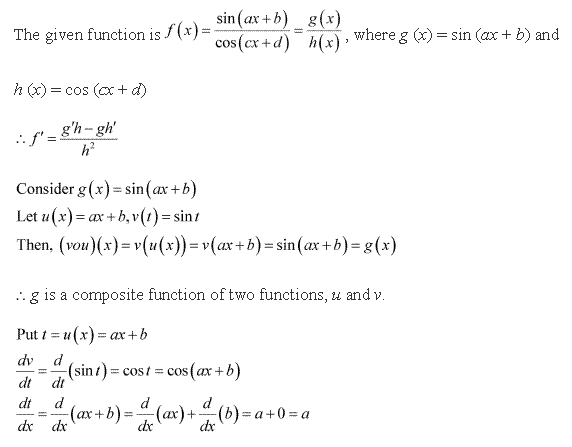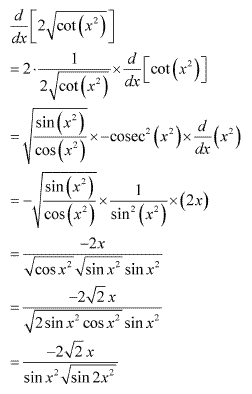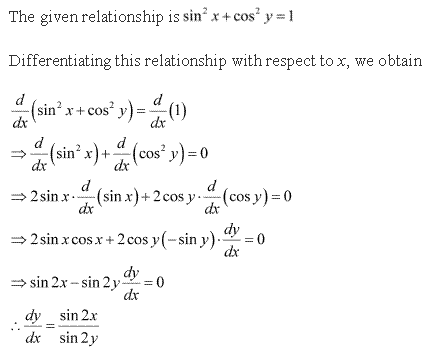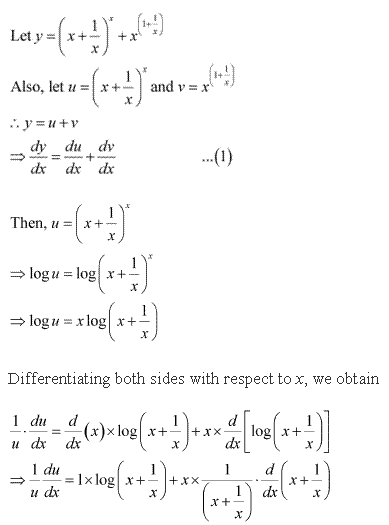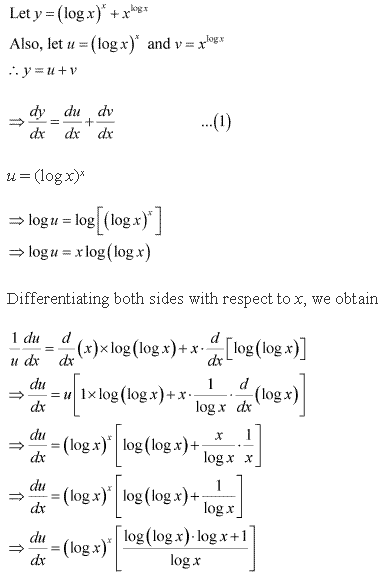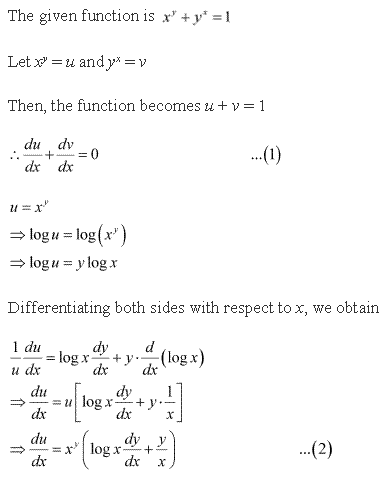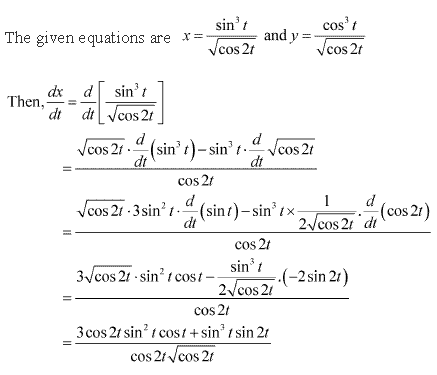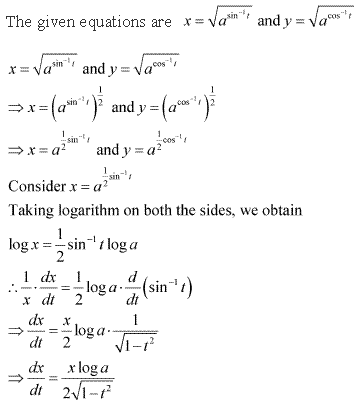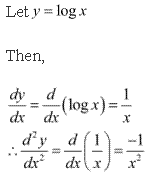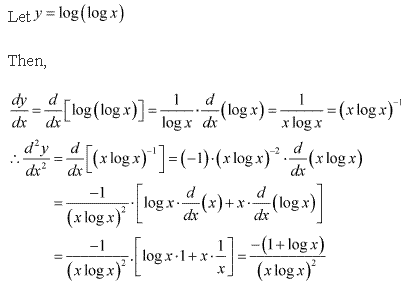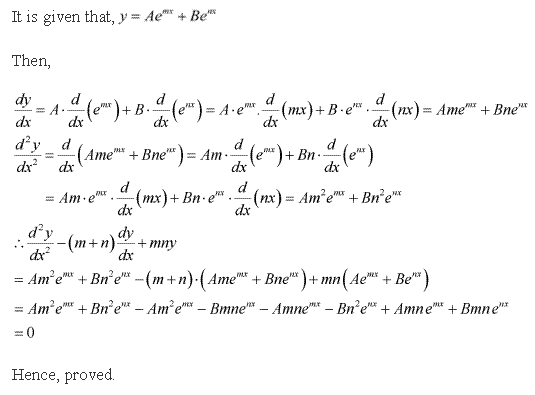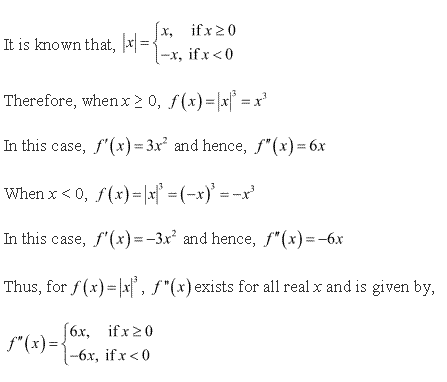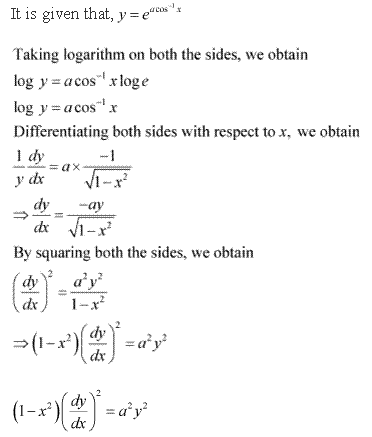Class 12-commerce NCERT Solutions Maths Chapter 5: Continuity and Differentiability
Continuity and Differentiability Exercise Ex. 5.1
Solution 1
The given function is f(x) = 5x - 3
At x = 0, f(0) = 5 × 0 - 3 = -3
Solution 2
Solution 3



Solution 4
Solution 5

Solution 6

Solution 7


Solution 8

Solution 9
Solution 10

Solution 11
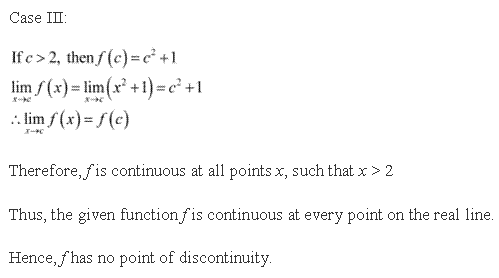
Solution 12


Solution 13


Solution 14



Solution 15


Solution 16

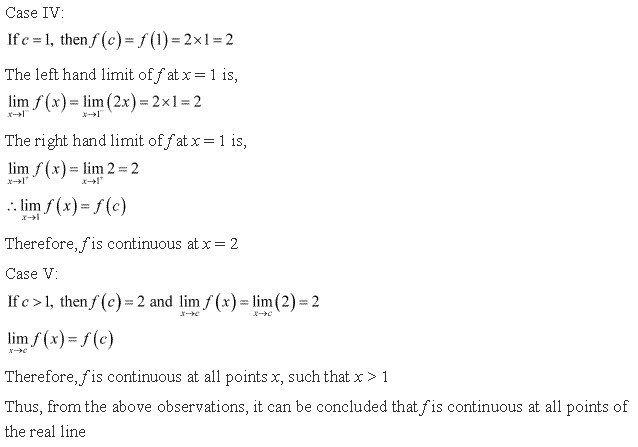
Solution 17

Solution 18
Solution 19
Solution 20
The given function is f(x) = x2 - sinx + 5
It is evident that f is defined at x = ∏

Solution 21

Solution 22



Solution 23

Solution 24


Solution 25

Solution 26

Solution 27

Solution 28
The given function f is continuous at x = ![]() , if f is defined at x =
, if f is defined at x = ![]() and if the value
and if the value
of f at x = ![]() equals the limit of f at x =
equals the limit of f at x = ![]()
Solution 29
Solution 30

Solution 31

Solution 32



Solution 33



Solution 34




Continuity and Differentiability Exercise Ex. 5.2
Solution 1
Then, (v ο u)(x) = v(u(x)) = v(x2 + 5) = sin (x2 + 5) = f(x)
Solution 2
Solution 3
Solution 4

Solution 5


Solution 6
Solution 7
Solution 8

Solution 9

Solution 10

Continuity and Differentiability Exercise Ex. 5.3
Solution 1
Solution 2
Solution 3
Solution 4
Solution 5
Solution 6
Solution 7
Solution 8
Solution 9

Solution 10

Solution 11
Solution 12


Solution 13

Solution 14
Solution 15
Continuity and Differentiability Exercise Ex. 5.4
Solution 1
Solution 2
Solution 3
Solution 4
Solution 5
Solution 6
Solution 7
Solution 8
Solution 9
Solution 10
Continuity and Differentiability Exercise Ex. 5.5
Solution 1
Solution 2
Solution 3
Solution 4

Solution 5
Solution 6


Solution 7

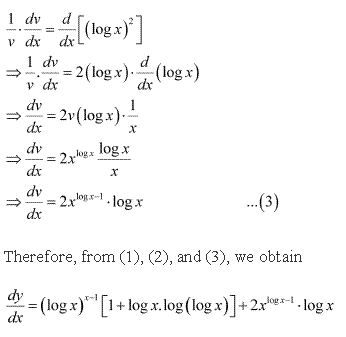
Solution 8
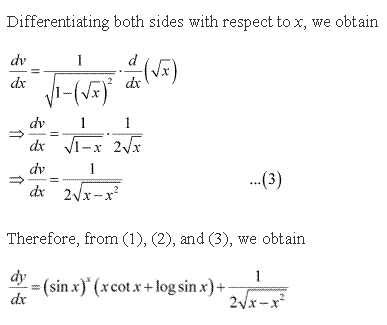
Solution 9

Solution 10

Solution 11


Solution 12


Solution 13
Solution 14
Solution 15
Solution 16
Solution 17
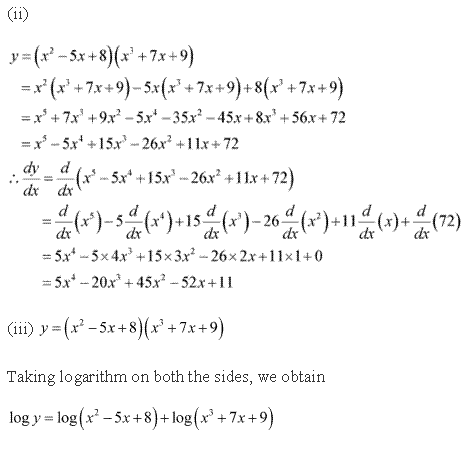

Solution 18
Continuity and Differentiability Exercise Ex. 5.6
Solution 1
Solution 2
Solution 3
Solution 4
Solution 5
Solution 6
Solution 7


Solution 8

Solution 9
Solution 10
Solution 11

Continuity and Differentiability Exercise Ex. 5.7
Solution 1
Solution 2
Solution 3
Solution 4
Solution 5
Solution 6
Solution 7
Solution 8
Solution 9
Solution 10
Solution 11
Solution 12

Solution 13
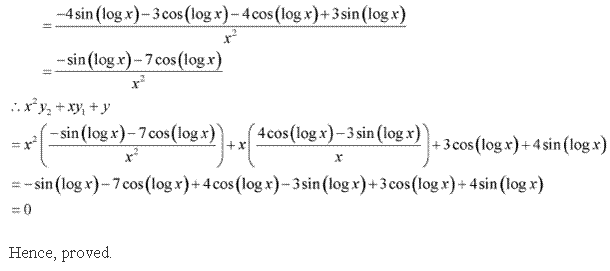
Solution 14
Solution 15
Solution 16
Solution 17
Continuity and Differentiability Exercise Misc. Ex.
Solution 1
Solution 2
Solution 3

Solution 4
Solution 5
Solution 6

Solution 7
Solution 8
Solution 9
where sin x > cosx
Solution 10
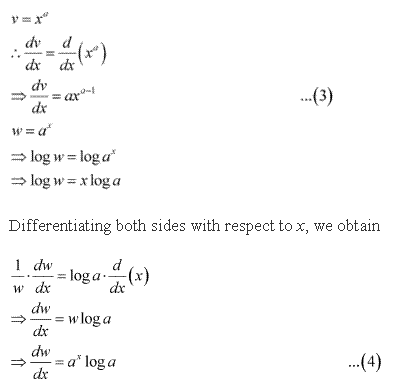

Solution 11

Solution 12
Solution 13
Solution 14
Solution 15



Solution 16

Solution 17
Solution 18
Solution 19
Solution 20
Yes.
Consider the function f(x)=|x-1|+|x-2|
Since we know that the modulus function is continuous everywhere, so there sum is also continuous
Therefore, function f is continuous everywhere
Now, let us check the differentiability of f(x) at x=1,2
At x=1
LHD = ![]()

[Take x=1-h, h>0 such that h→0 as x→1-]
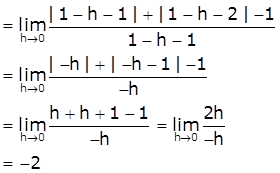
Now,
RHD = ![]()

[Take x=1+h, h>0 such that h→0 as x→1+]
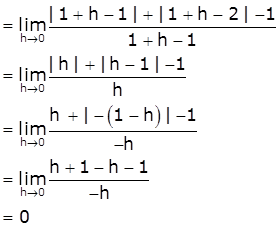
≠ LHD
Therefore, f is not differentiable at x=1.
At x=2
LHD = ![]()

[Take x=2-h, h>0 such that h→0 as x→2-]

Now,
RHD = ![]()

[Take x=2+h, h>0 such that h→0 as x→2+]
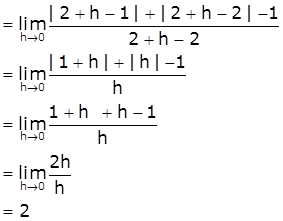
≠ LHD
Therefore, f is not differentiable at x=2.
Hence, f is not differentiable at exactly two points.
Solution 21
Solution 22





